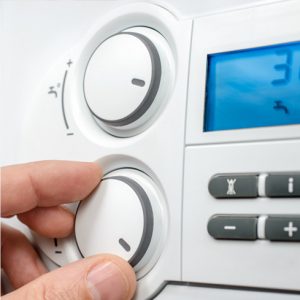
The dreaded “no hot water” can be a sign of low pressure in your home’s boiler. You might think that this is something only the professionals know how to fix, but luckily it isn’t as complicated or difficult as you may have thought! Here are some common causes and their quick fixes for lost pressure problems with boilers.
What Is Water Pressure?
Your boiler heats water that flows around a circuit of pipes and radiators through your home. For it to work as efficiently possible, you need stable pressure at all times – but especially when starting up! Pressure for most modern boilers is maintained by a “filling loop.” This connects to your cold-water pipe.
What Causes a Drop in Pressure?
Leaks – You may have a leak somewhere in your boiler system. The small leaks can lead to an eventual drop in pressure, so you should take notice of any signs or damp patches near pipes around radiators and the heat exchanger itself! Avoid looking inside boilers as this may cause more harm than good; instead contact a gas safe engineer immediately when noticing water leaking or pressure fluctuations.
Bleeding Radiators – If you recently bled your radiators, it’s possible that some pressure has been lost. That’s because when we do this process of releasing air from inside a boiler system and reducing its volume – like vacuum-as in the case with cars where one shuts down their engine but leaves all power windows running so nobody can open them while driving through windy weather.
How Can I check The Boiler Pressure?
Usually, on the front of your boiler, you’ll find a water pressure gauge. If you have a hydraulic pressure gauge, you’ll see low and high pressure indicated by red sections on the dial. The position set when the boiler was installed is sometimes shown by a red indicator needle. e. On most digital gauges, you’ll see a flashing pressure reading, if there’s a low (or high) pressure warning.
If your boiler pressure reads less than 1 bar, it’s possible that you might have lost water from the system, which needs to be replaced. This is where that filling loop (or filling link) comes in again!
If the pressure gauge on your boiler indicates high pressure (above 2.75 bar), then you may need to bleed a radiator in order bring it down below 1.5 bars and avoid dangerous situations due water temperature at fault here! For best results we recommend a gas safe engineer to take care of this for you as they will know what needs to be done.
Can I fix Low Boiler Pressure myself?
Boiler pressure systems differ, so it’s always best to check your manual. Your boiler may also have instructions on the rear of the control panel, If you don’t have any tools or need help with this task then it is always best to contact your local Gas Safe Engineer.
Re-pressurising your boiler means allowing more water to enter the system, from an external supply. The two main types of filling loop are ‘built in’ and they can vary greatly depending on design but here’s how it generally works:
- Switch off and allow your boiler to cool
- Double-check that both ends of the filling loop are securely attached
- Open both valves, to allow cold mains water into the system (you should hear it)
- Wait for the pressure gauge to read 1.5 bar
- Close both valves, one after the other
- Switch the boiler back on and, if needed, press the reset button
- Undo both ends of the filling loop and remove. Be careful to catch any water spillage, and keep the filling loop in a safe place!
If you are having problems with your boiler pressure then contact ProTecBoilers today – 01924 731 838


